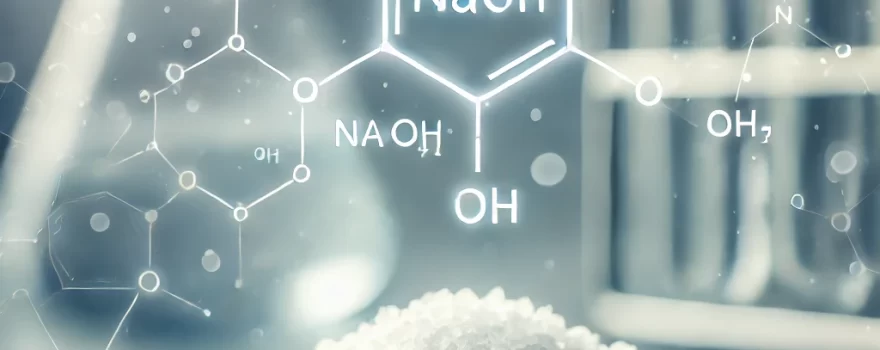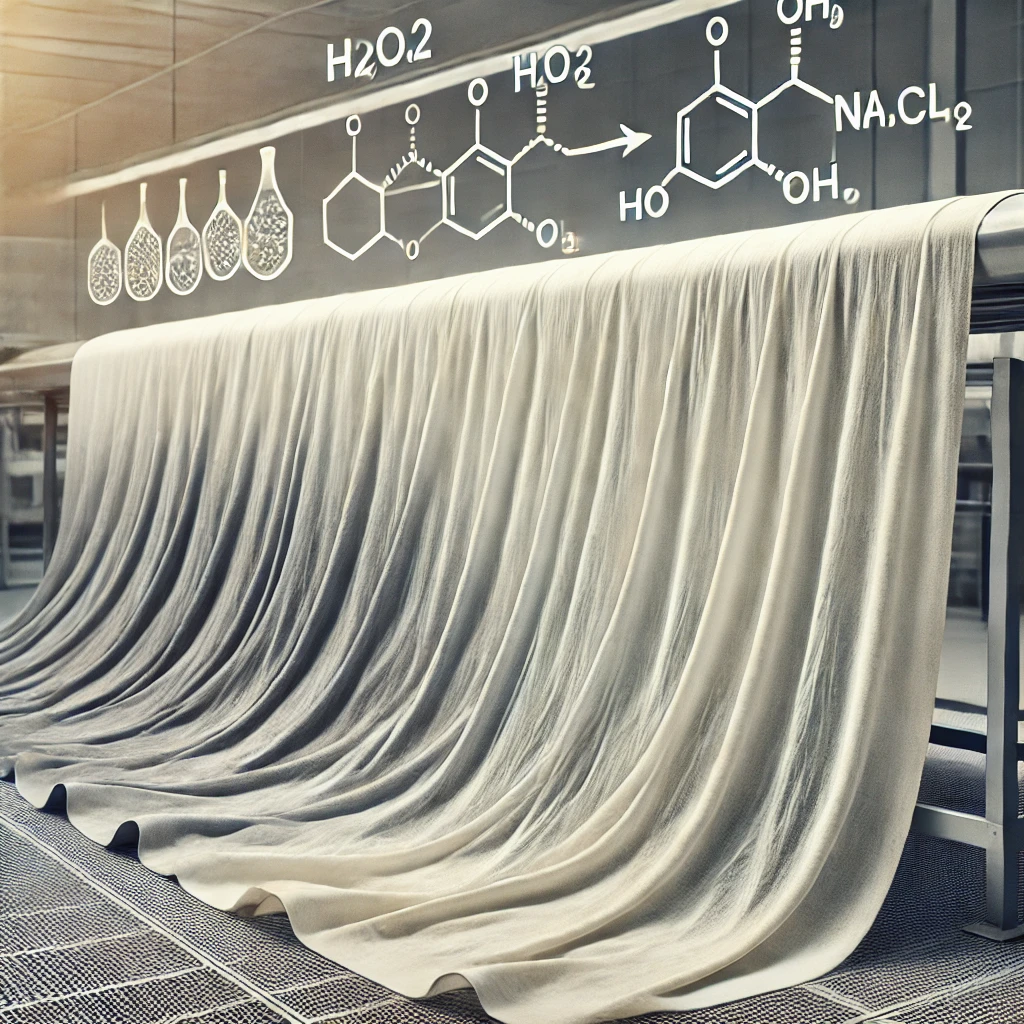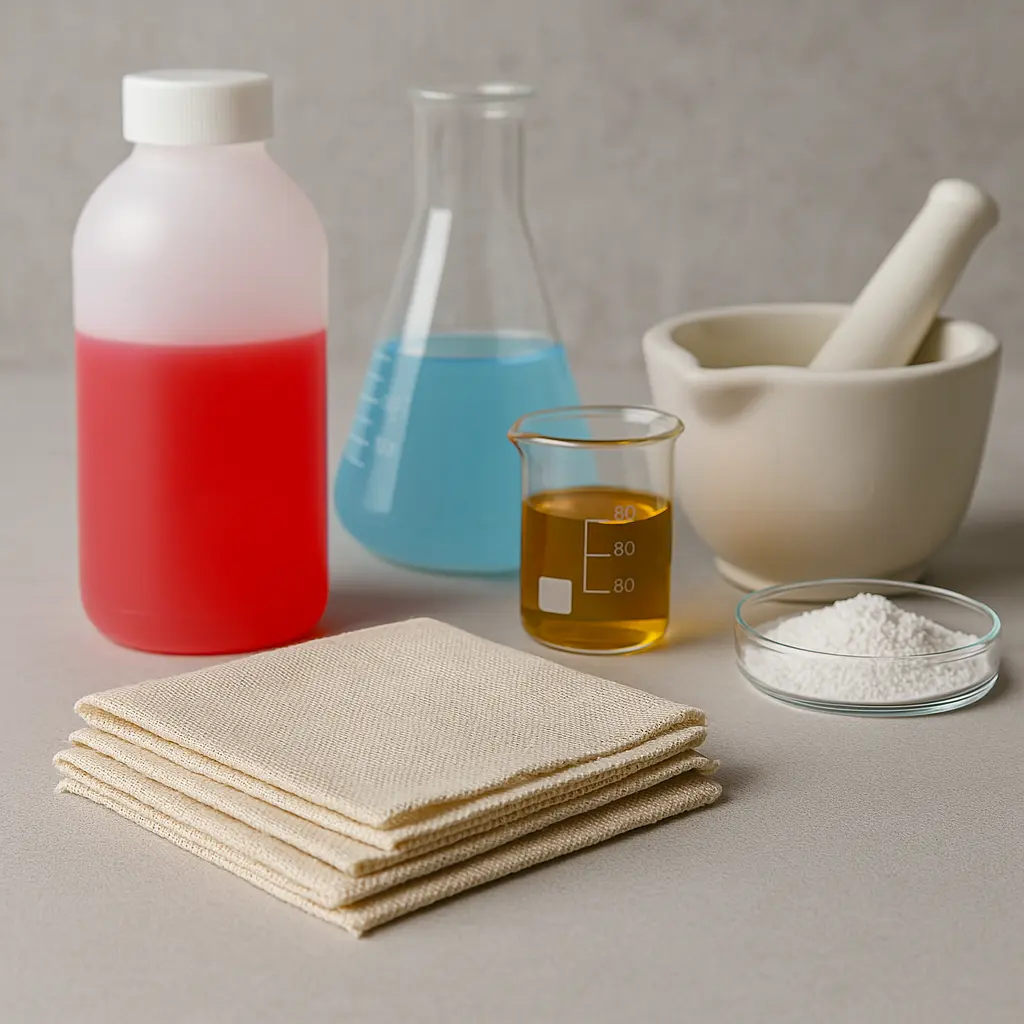
Table of Contents
Use Caustic Soda in Textile Chemicals:
Chemical Properties and Reactions:
Caustic soda, or sodium hydroxide (NaOH), is a strong base. It reacts with acids, fats, and oils. This reactivity is what makes it so useful.
It dissolves in water, releasing heat. This exothermic reaction helps it break down impurities.
Why is this important? The chemical properties dictate how it interacts with fibers and other chemicals. For instance, its ability to saponify fats is vital for scouring.
Impact on Fiber Structure:
Caustic soda alters the physical structure of cellulose fibers, like cotton. It causes them to swell.
This swelling increases the surface area. It also rearranges the cellulose molecules. The result? Enhanced luster and strength.
Think of it this way: it’s like inflating a balloon. The surface expands, and the structure changes
Importance in Pre-treatment Processes:
Before dyeing or finishing, textiles need preparation. Caustic soda is a key part of this.
It removes natural and added impurities. This ensures uniform dye uptake.
Without proper pre-treatment, you’ll get uneven results. Caustic soda sets the stage for quality.
Role in Dyeing and Finishing:
Caustic soda helps fix certain dyes to fibers. It also controls pH during dyeing.
In finishing, it can create special effects, like mercerization.
It is not a matter of simply adding the chemical, but knowing how the chemical reacts with the fabric and the other chemicals in the process.
What is Caustic Soda?
Chemical Composition and Properties of Caustic Soda
Chemical Composition:
Caustic soda is sodium hydroxide (NaOH). It consists of one sodium atom, one oxygen atom, and one hydrogen atom.
It’s an ionic compound. This means it dissociates into Na+ and OH- ions in water.
This simple composition gives it powerful alkaline properties.
Physical Properties:
It’s a white, solid substance. It can be in flakes, pellets, or a solution.
It’s hygroscopic. This means it absorbs moisture from the air.
It dissolves in water, releasing a lot of heat. This exothermic reaction can be quite intense.
Chemical Properties:
It’s a strong base. It reacts vigorously with acids.
It saponifies fats and oils. This is how it breaks down greases.
It’s corrosive. It can damage skin and many materials. So, handle it with care.
The OH- ions are what create the high pH.
Reactions with Textiles:
With cellulose fibers (like cotton), it causes swelling. This changes the fiber’s structure.
It breaks down impurities on the fabric surface. This prepares the fabric for further processing.
The degree of reaction depends on the concentration and temperature of the solution.

Importance of Caustic Soda in Textile Industry
Why Caustic Soda is a Vital Ingredient in Textile Manufacturing
| Aspect | Role of Caustic Soda in Textile Industry |
| Essential for Fabric Preparation | – Cleans and preps fibers from raw cotton to finished cloth. – Removes natural waxes and impurities, ensuring dyes and finishes adhere properly. – Prevents uneven dyeing and poor-quality fabric. |
| Enhancing Fabric Properties | – Used in mercerization to improve fabric luster and strength. – Alters fiber structure, making it smoother and more receptive to dyes. – Enhances both appearance and performance. |
| Critical in Dyeing Processes | – Provides alkaline conditions needed for certain dyes to bind to fibers. – Helps control pH levels, ensuring consistent and even color. – Prevents issues like uneven dyeing. |
| Neutralizing Acidic Residues | – Neutralizes acidic residues left after treatments like bleaching. – Prevents fabric damage and discoloration. – Ensures long-lasting fabric quality. |
| Cost-Effective Solution | – Widely available and relatively inexpensive. – Reduces the need for multiple chemicals, optimizing production costs. – Increases efficiency in textile manufacturing. |
Key Applications of Caustic Soda in Textile Chemicals
| Application | Role of Caustic Soda in Mercerization for Cotton Fabrics |
| Fiber Swelling & Structural Changes | – Causes cotton fibers to swell, increasing cross-sectional area. – Rearranges cellulose molecules, making fibers smoother and rounder. – Enhances light reflection, leading to increased luster. |
| Enhanced Luster & Shine | – Produces a silk-like sheen, improving aesthetic appeal. – Smoother fiber surfaces reflect light more effectively. – A major selling point for premium textile products. |
| Increased Tensile Strength | – Strengthens fibers through structural changes. – Makes mercerized cotton more durable and resistant to tearing. – Essential for textiles that require high durability. |
| Improved Dye Affinity | – Expands fiber surface area, allowing better dye penetration. – Produces deeper, more vibrant colors. – Vital for high-quality, colored textiles. |
| Process Control | – Requires careful control of caustic soda concentration, temperature, and tension. – Proper management ensures consistent and high-quality results. – Deviations in any factor can lead to defects in the fabric. |
Desizing: How Caustic Soda Helps in Removing Starches and Sizing Agents
Effective desizing ensures a smooth, quality fabric.
Caustic soda breaks down starches into soluble sugars.
It turns oils and waxes into soaps for easy removal.
Improved water penetration leads to better dyeing.
It prevents uneven color by clearing sizing residues.
Scouring: Enhancing Fabric Absorbency and Removing Impurities
Cleans and prepares fabric for further processing.
Caustic soda breaks down natural waxes and oils.
It boosts fabric’s water absorption for better dyeing.
Removes leftover chemicals and dirt.
Bleaching: Contribution of Caustic Soda to Whiteness and Purity
Stabilizes bleach solutions for consistent results.
Boosts bleach effectiveness by raising pH.
Breaks down natural color pigments.
Removes impurities for a cleaner fabric.
Prevents yellowing during bleaching.
Dyeing and Printing: Impact of Caustic Soda on Color Absorption and Fastness
Ensures even dye penetration for uniform coloring.
Swells fibers for better dye penetration.
Improves color fastness by strengthening dye bonds.
Controls pH for optimal reactive dye fixation.
Helps fix printing pastes for sharp prints.
Maintaining the correct pH is crucial for effective dyeing. While caustic soda provides alkalinity, other acids, like formic acid, are used for acidification. For detailed information on formic acid’s applications, see [link to https://biopolchemicals.com/textile-industry/formic-acid-in-textile-chemicals/ ]

Chemical Reactions and Mechanisms
How Caustic Soda Interacts with Textile Fibers and Chemicals
| Reaction Type | Role of Caustic Soda in Textile Processing |
| Hydrolysis of Cellulose | – Reacts with cellulose in cotton fibers, causing swelling. – Hydroxyl ions (OH⁻) break hydrogen bonds between cellulose chains. – Alters fiber structure, making it smoother and more lustrous. |
| Saponification of Fats and Oils | – Reacts with fats and oils, forming soap (saponification). – Converts triglycerides into glycerol and fatty acid salts, which are referred to as soaps. – Essential for impurity removal during the scouring process. |
| Neutralization Reactions | – Neutralizes acids, forming salts and water. – Removes residual acids from fabrics after bleaching or other acid treatments. – Plays an essential role in ensuring the appropriate pH balance is maintained. |
| Reactions with Reactive Dyes | – Creates an alkaline environment required for reactive dye bonding. – Hydroxyl ions react with dye molecules, forming covalent bonds with cellulose. – Ensures high color fastness and durability of dyed fabrics. |
| Impact on pH Levels | – Raises pH levels, creating an alkaline environment. – Crucial for textile processes like dyeing and bleaching. – Influences the effectiveness of other chemicals in processing. |
Quantifiable data: A concentration of 5-10% caustic soda solution can raise the pH of a textile bath to above 12.
Benefits of Using Caustic Soda in Textile
Processing Efficiency, Cost-Effectiveness, and Environmental Considerations
Efficiency:
Speeds up processes like mercerization and scouring.
Improves dye uptake and consistency.
Cost-Effectiveness:
Widely available and relatively inexpensive.
Reduces the need for multiple chemicals.
Environmental Considerations:
Can be part of closed-loop systems to minimize waste.
Proper neutralization is vital to reduce environmental impact.
Quantifiable data: Neutralizing wastewater to a pH of 6-9 before discharge is often required by regulations.
Safety Measures and Handling Guidelines
Best Practices for Storage, Handling, and Disposal of Caustic Soda
Storage:
Store in dry, well-ventilated areas.
Keep away from acids and incompatible materials.
Handling:
Wear appropriate PPE: gloves, goggles, and protective clothing.
Avoid skin and eye contact.
Handle in well-ventilated areas.
Disposal:
Neutralize before disposal.
Follow local and national regulations.
Avoid disposal into waterways.
Quantifiable data: Neutralization to a pH between 6 and 9 is typically required before disposal into municipal systems.

Environmental and Sustainability Considerations
Eco-Friendly Alternatives and Wastewater Treatment Solutions
Alternatives:
Explore enzymes for desizing and scouring.
Consider less harsh alkaline agents.
Wastewater:
Implement neutralization systems.
Use filtration and treatment to remove residual chemicals.
Recycle treated water.
Quantifiable data: Wastewater treatment can reduce caustic soda concentration by over 99% before discharge or reuse.
Future Trends in Textile Processing with Caustic Soda
Innovations, Regulatory Changes, and Emerging Technologies
Stricter limits on wastewater discharge.
Innovations:
Advanced delivery systems for precise application.
Integration with automation for process control.
Regulatory Changes:
Increased focus on sustainable chemical use.
Emerging Technologies:
Closed-loop systems for caustic soda recycling.
Nanotechnology for enhanced fiber modification.
Final Thoughts on the Use of Caustic Soda in the Textile Industry
Caustic soda remains a vital component in textile processing. Its versatility, from mercerization to pH control, is undeniable. However, responsible use is crucial. We must balance its benefits with environmental and safety considerations. Innovations in application and wastewater treatment will shape its future. While alternatives exist, caustic soda’s efficiency and cost-effectiveness keep it relevant. As the industry progresses, our strategy regarding this essential chemical will also adapt.

